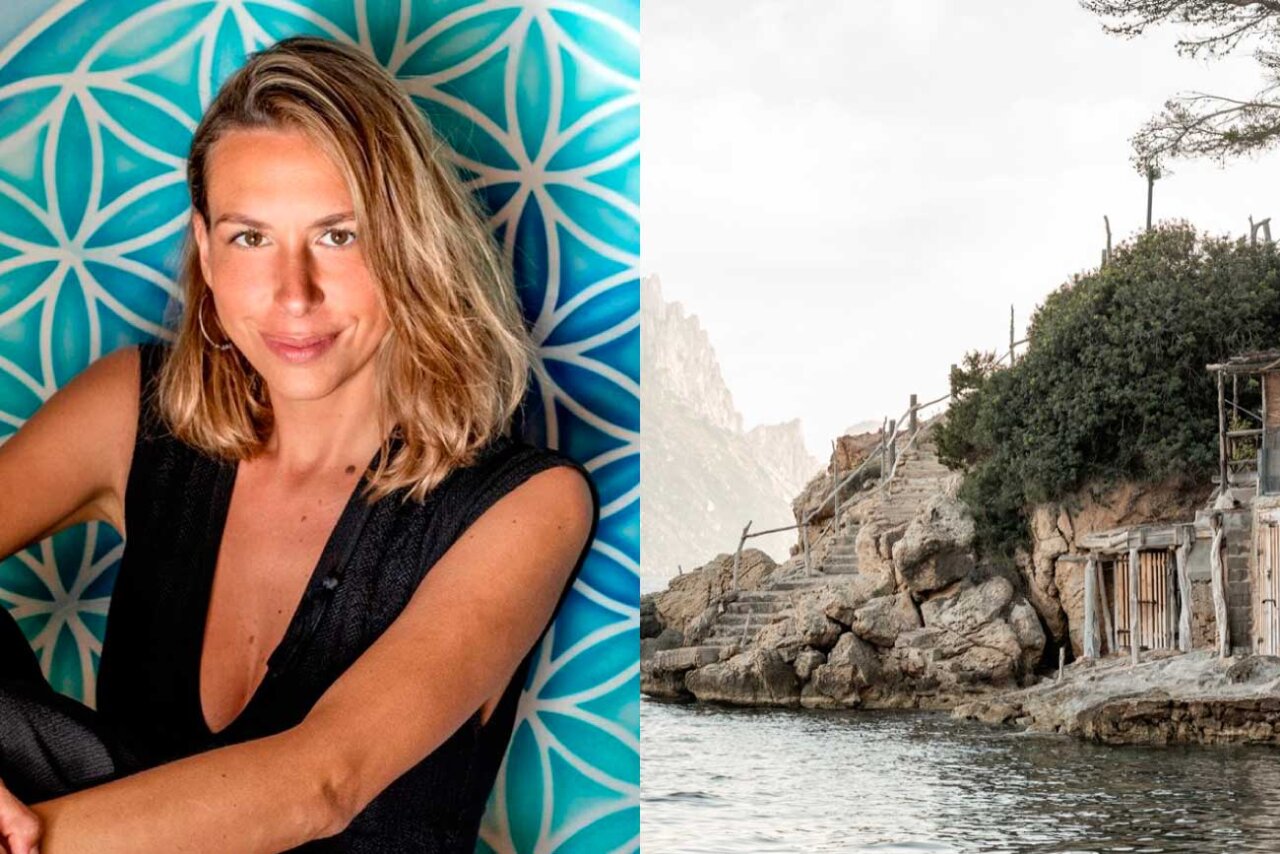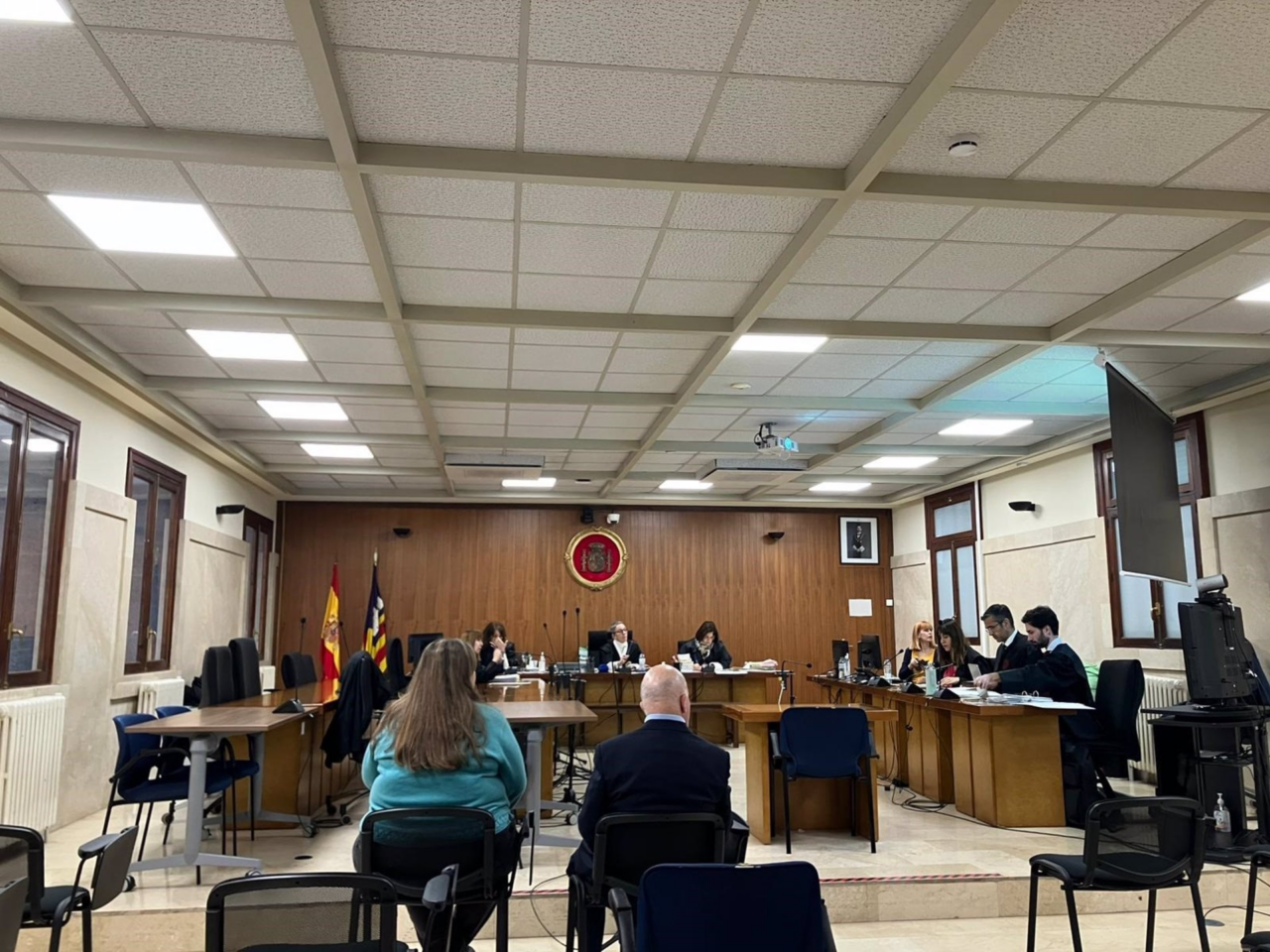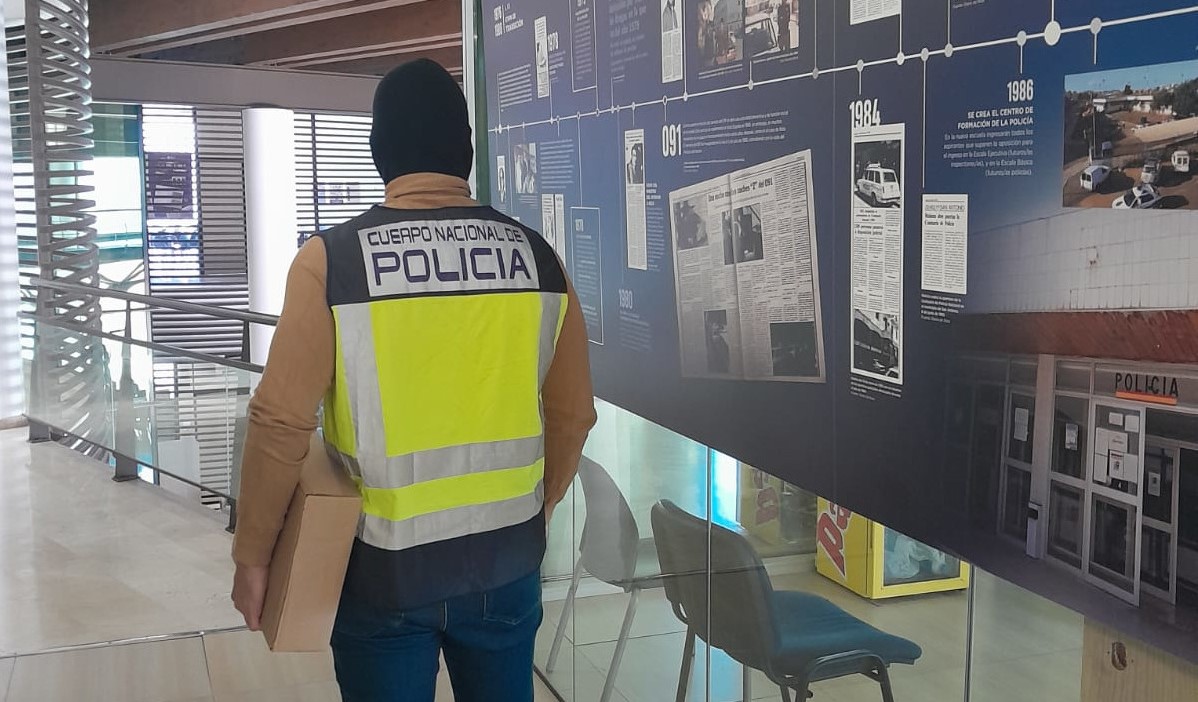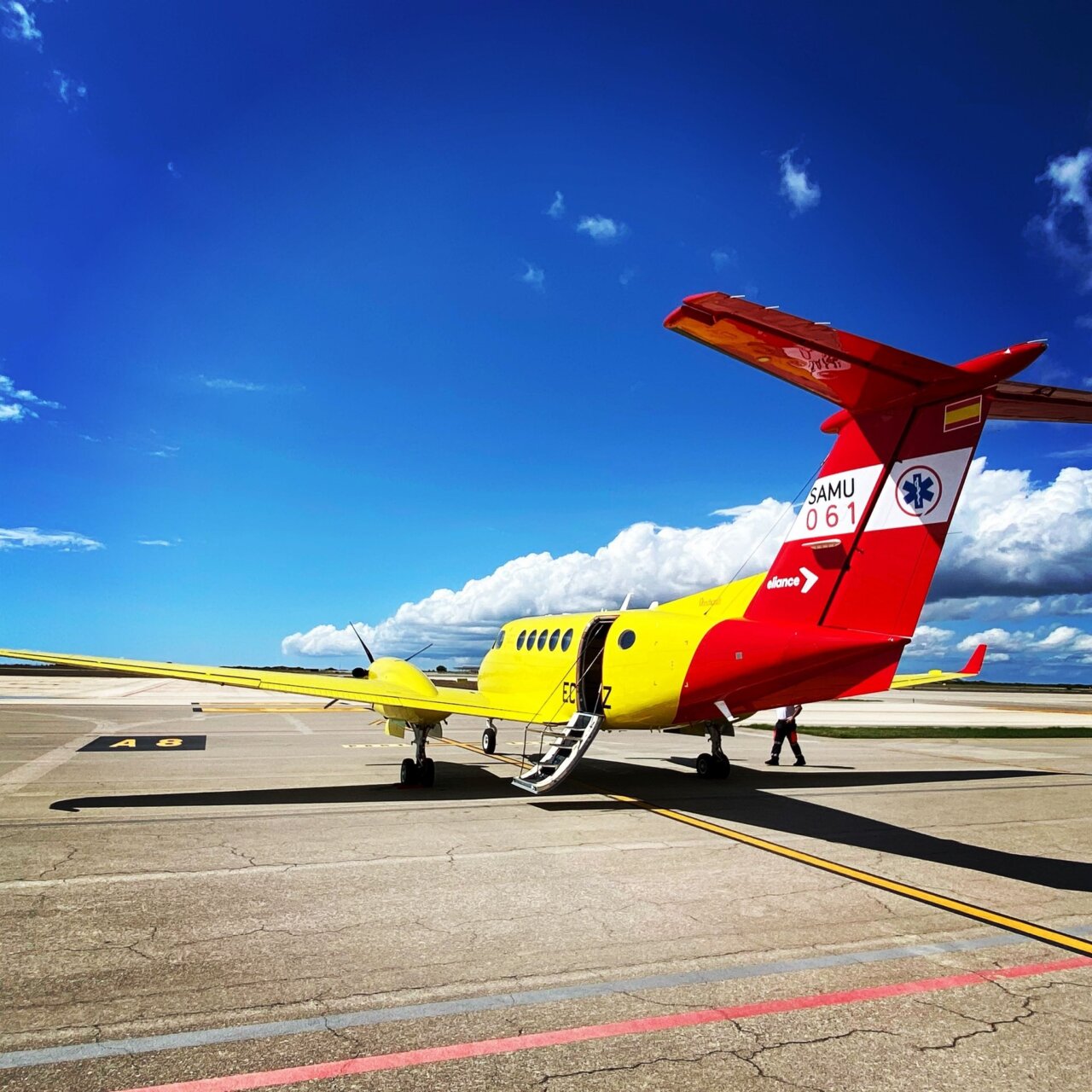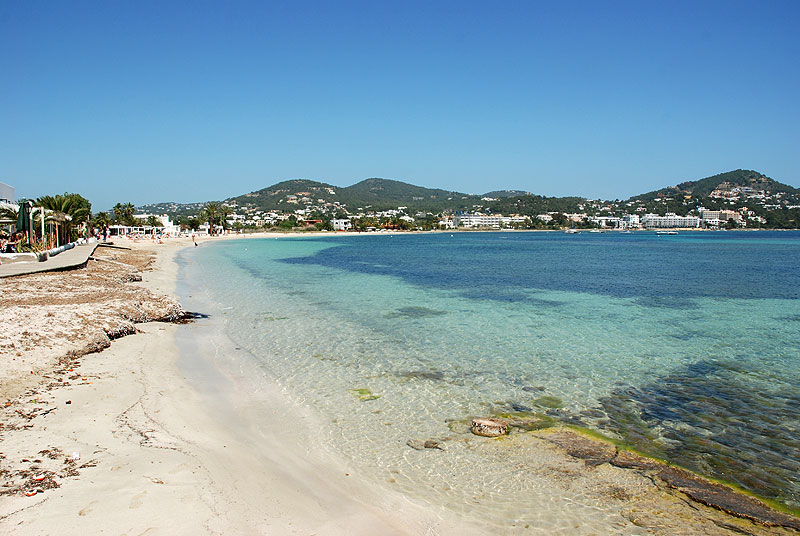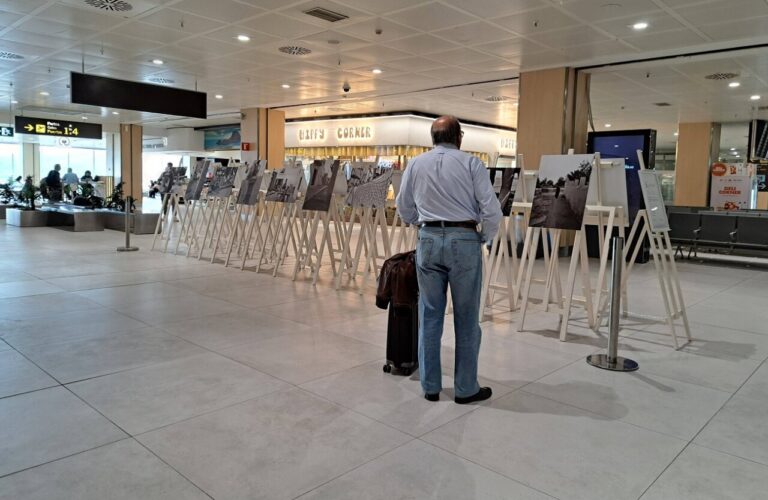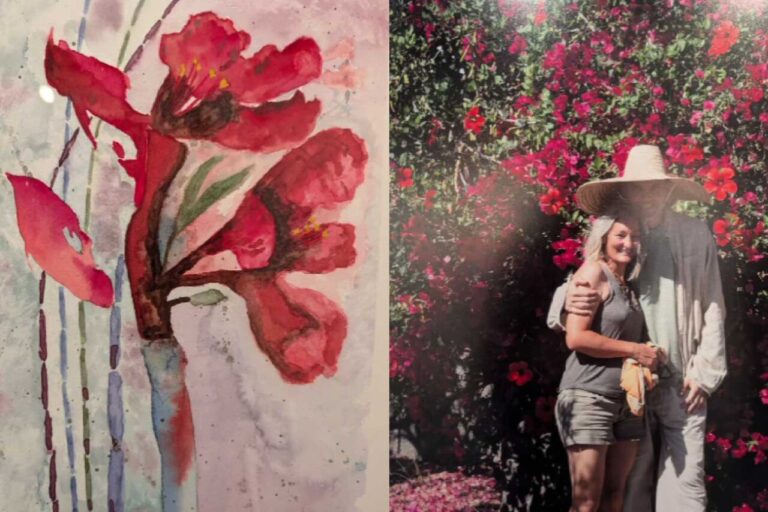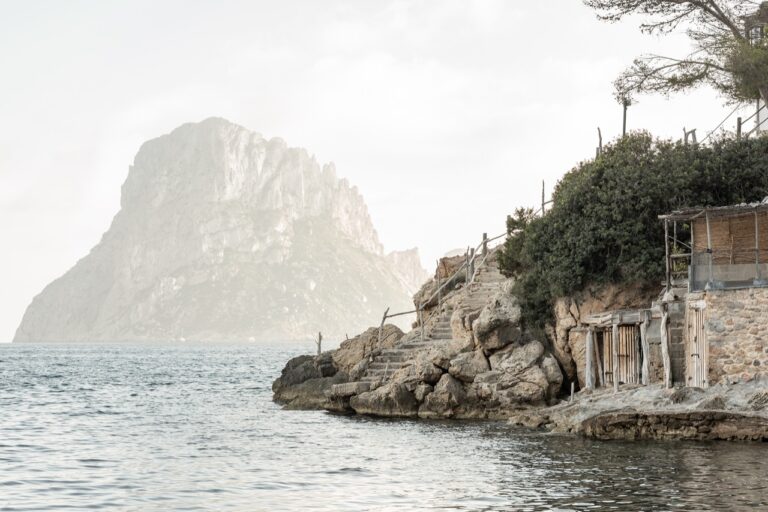Sofia Gomez Fonzo (Viña del Mar, Chile, 1987) says that getting to know Ibiza in 2007 opened her head. She came for her 20th birthday, which she spent on the island, with her boyfriend. She stayed for a month: “A place where you could breathe freedom, very safe, where you can do what you want and nothing will happen to you, with very cosmopolitan people, a lot of art, a lot of expression in general, not only the people but also the whole atmosphere… the discos, the drag queens, everything”.
So he decided that this was the land for him: “I said: ‘I want to live here'”. Said and done, he returned to the southern hemisphere, finished his studies and returned to Ibiza permanently, already in 2011. Since then, he has dedicated himself to exploring through the lens his “love affair” with the island that “flirts” with him, the island of “a thousand faces”.
His exhibition at Port Nautic and the restaurant El Nautico can be enjoyed until December 14, but it is an ideal artistic plan to enjoy this long weekend.
-He has witnessed Ibiza change over the last decade and more.
-Yes, totally, the world in general has changed a lot… I think Ibiza started to change more when the boom started. boom of Instagram, the hidden things were no longer done, right? The secret party, the secret place, the secret beach, all these things started to be more and more crowded, more and more in vogue, everyone wanted to know everything, they started to publish all the hidden places, they stopped being secret. Today everyone wants to be a travel blogger, so everything is transformed into a need to know more about Ibiza than before it was a “I’m going to discover Ibiza”.
-What an interesting factor you point out: the networks as a huge influence for the change in Ibiza. It is true that we live in a world that goes through them and through the image, and what a place to live in. instagrameable than Ibiza.
-Yes, it became a very externalized thing at the end, we want others to see all these things that are happening in here, which used to be very protected, it was the opposite.
Photography by Sofía Gómez Fonzo
-You didn’t study photography per se, how did it become your profession?
–I always took pictures, since I was a child, I had the same camera I have now, an Olympus point and shoot. I still use it for analog. I always loved capturing what was going on around me, I took it a little bit like an Instagram today, but with my little analog camera.
I always studied art, my grandmother and great-grandmother were fine artists, teachers, and I always painted, that was my medium. Then, in high school, I did art high school and there I learned a lot about exhibitions, painting and having a concept, being able to explain your work and more, but then when I got out of high school I decided to study art history and graphic design in college, because it seemed like something I could work on. What concerned me most at that time, more than exploring my art, was to be able to make a living out of it..
I had photography classes, we learned how to develop our photos, the typical things, but also at that time digital photography was becoming popular, I was just starting. I had a tiny little digital camera that I won in a photography contest that I had done with my little analog camera, I learned to use it and then it became a reflex. When I arrived in Ibiza I took a lot of photos on the digital reflex that I had and then published in Pacha magazine the following year.
-And that’s when this path began to consolidate.
-For me that was already a fulfilled journey. When I arrived in Ibiza I was always taking pictures, but I started working in a design agency. I realized that I didn’t really like the job, I really liked studying graphic design, but I didn’t like working in graphic design, because I was always at the computer doing what others asked me to do. Then the company I worked for went bankrupt and I started taking photos. And I started taking photos for White Ibiza, in 2012. I worked there for about 5 years, also doing design, but I got more into photography itself. It has become my job almost out of nowhere, unintentionally. I love it: I’m outside more, I connect with people and I get a lot of fulfillment, I’m much more passionate about it.
-He also publishes in The New York Times.
-Yes, I have my project and I work on commissions. I work a lot for magazines, publications like White Ibiza, The New York Times, when they come here they need photos of someone from here and they look for me.
I’ve also done wedding photography, I must have done about 200 weddings since I’ve been in Ibiza, but I hardly do it anymore. I really like working one on one with people, taking portraits. And what I do most is architecture. I think my eye for design suits architecture very well. I really like working with the lines and the light in these spectacular houses that are here too. I am very fortunate because I really like to do that and I get a lot of work out of it.
And I also do other kinds of work like retreat work or event work. Or the last few years a lot of art, too. I take photos of artworks and exhibitions. It’s quite varied, but the axis on which my work is centered is that I work a lot with local people. So yes, with local publications, with local people, with businesses, companies, people who own houses or architects, things like that. It fills me a lot, generating community for me is very important.
-There is a duality in Ibiza that we could somehow summarize in a contrast between luxury and nightlife-island of privileged nature. How do you address that in your work?
-The truth is that I never worked in discotheques. But I really like to go, the night. I am a very healthy person when it comes to partying, but I really like dancing and music. I really like people to have a good time. But for me, the truth is, what inspires me is the Ibiza that only you know.
For me, the Ibiza that inspires me is the Ibiza that speaks with its light.. Que habla con sus paisajes escondidos. Con sensaciones. Como cuando te vas solo y te pierdes y te encuentras con lo que ella te quiere mostrar. Mi Ibiza es bastante como una relación amorosa. Es mi relación más larga, te podría decir. Entonces, me gusta que ella… she flirts with me through her waves, her hiding places, the sun, all these things.of all these things.
Ibiza has not only two faces, it has many faces. And it extrapolates a lot. So, when you polarize the night, the day, the light, the dark, the party, the tranquility, Ibiza is all that. It’s not one or the other. For me it’s the balance between all those things. If that balance is not there, it doesn’t exist. It’s like having the light without the shadow. It has to go hand in hand. So, that’s why I like to portray quite a lot of everything.
Sofía Gómez Fonzo exhibits at El Náutico and Port Nautic
-And what do you see most of all in your exhibition at El Nautico?
-Now, in the Nautico exhibition I show much more nature, because I focused on the whole sensation of the sea, of being close to the sea, of the peace it gives you, of those little fishermen’s huts, of that authentic Ibiza where time does not pass even if we are not there. Of that timeless feeling that the island has, which is not centered on the fact that there are discos, tourists or five-star hotels. That is no longer important because we are really looking for what Ibiza is for all of us.which is that part that that goes beyond all that we see. Porque claro, yo sí hago fotos de las iconografías, de la gente, de los tambores, de Pachá, de todo, porque son las caras de Ibiza. Son las que hacen Ibiza. La naturaleza, y esa también.
-Do you plan an exhibition and the pieces to be shown in it to be integrated with the place as well, as in this you say of the sea-El Nautico?
-I think that the public that goes to this place has more of a relationship with the sea. Maybe if I had done, what do I know, an exhibition more for English tourists or something like that, maybe I would have put more iconographies of another type. But for example, having Es Vedrà or having a fishermen’s house or having a little boat… yes, for me it is important to direct the exhibition to where the spectators are going, who are going to receive it in that way too. Because my intention is that people feel reflected or feel inspired as well. When I take that photo, I look for that inspiration. Then I want others to see it too, I want them to feel that.
-It’s one of his first exhibitions, he told me.
-Yes, I’ve been here for 13 years. I have enough photos to fill the whole house. But this year I did an exhibition somewhere else and that opened me up to the idea of exhibiting. And by opening myself to the idea of exhibiting, I immersed myself in what it is that I want to exhibit and what of all this body of work that I have is what I’m interested in showing. And when the Nautico asked me if I wanted to exhibit there, I reviewed that other exhibition I had done and chose pieces that were going to go with this more nautical theme, so to speak.
They are all ready-made photos that somehow or other tie together and create this conversation about the island.
-Is there a reason why in so many years of career you are, as you said, opening up to the idea of exhibiting only in this 2024?
-The truth is that here, because of the need to live, I never had the time to sit down and think about doing this and neither did I have the time to invest, which I did quite a lot. So, this year, when I was given the opportunity to have a space, I was able to sit down. It’s like giving birth. Tienes todas las cosas ahí, pero nunca te lanzas o nunca es el momento, por que no sé qué.
And in the end, when I decided to do it, everything was so easy and it was a process in which I was so comfortable, that I would do it all the time now. It has been very easy for me to rescue all these images and visions that I have of the island, that in the end, no matter how much you put them on Instagram and they go out into the world, having seen them on a large scale and framed on walls, doing their own thing, it was like each one came to life.
-He has said that it has been like giving birth but also the pleasure of doing it. For artists it is usually a great investment of time and energy to make an exhibition, something that many times is not known and is not appreciated.
-But, really, it has been a wonderful process. Taking pictures is something that happens in a second, for me, going out to take a picture is like going to the beach for a while and just something makes me take the picture, because it’s not something deliberate either. Very rarely do I go thinking that I’m going to take a picture of such and such a thing or such a moment. For me it is something of a second, very momentary, very much of living the moment, of feeling it, of seeing it, so it is something so sporadic and so much of the present that doing this is like going back again and looking and looking in a different way.
-An introspective process but knowing that it will be seen by someone else. The art itself.
-And you always get the “I don’t know if they’re going to like it” and it’s been very interesting to really see what people like the most, what things people want to take home or what things people are going to go and look at. It’s very interesting because in the end it’s like Ibiza, depending on each person, Ibiza is so different, so each person is going to see their Ibiza among my photos and each person is going to be inspired by different things.
There’s always that inner child, a little bit of “oh, what’s going to happen?”, and it’s super fun to see how it’s received. Because of course, I’ve seen my photos too, but it’s not the same.

